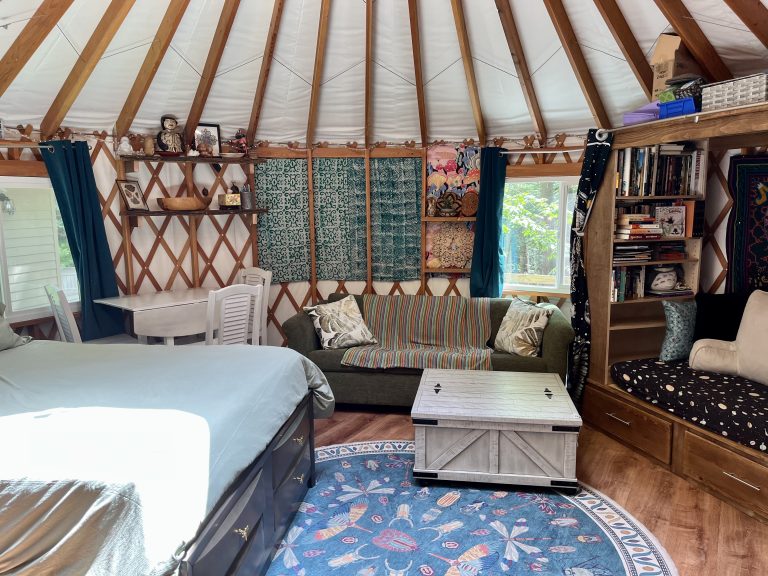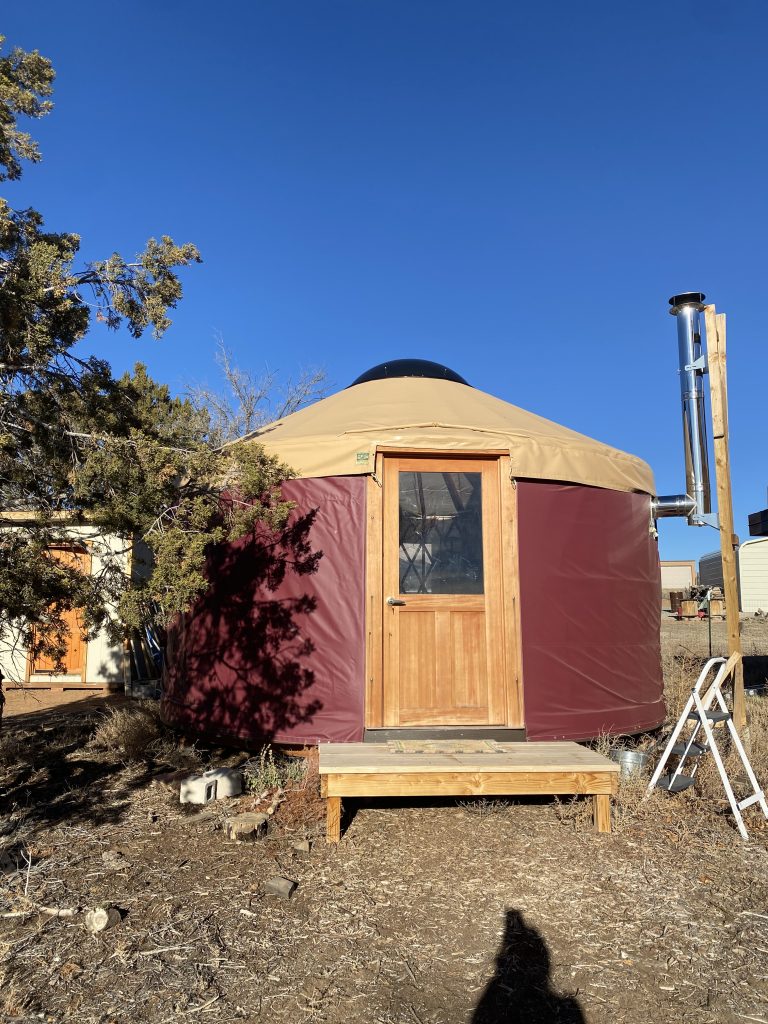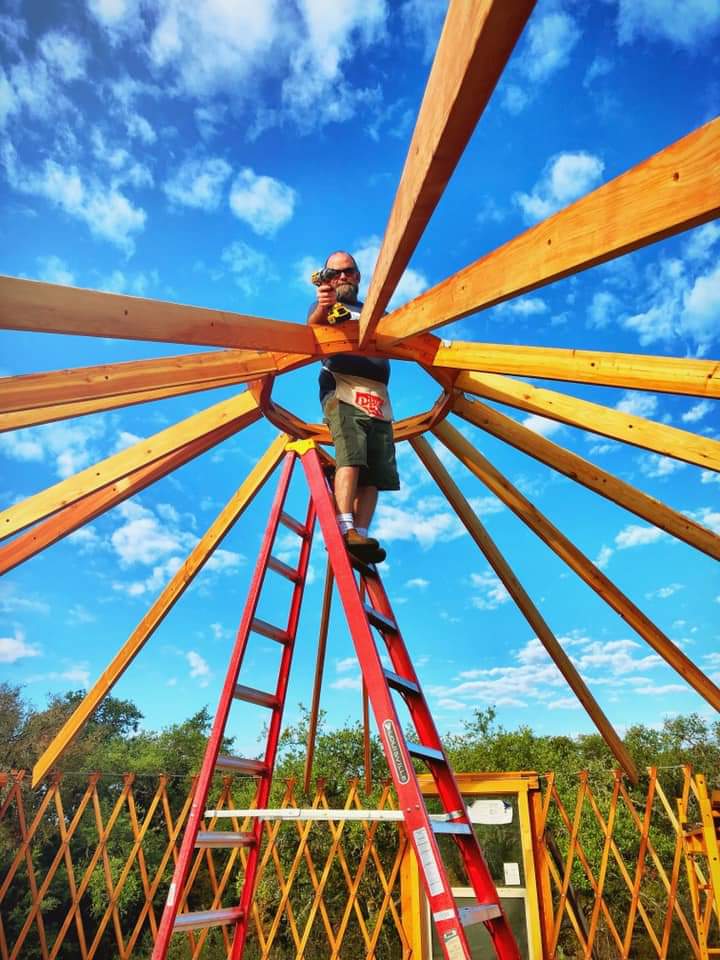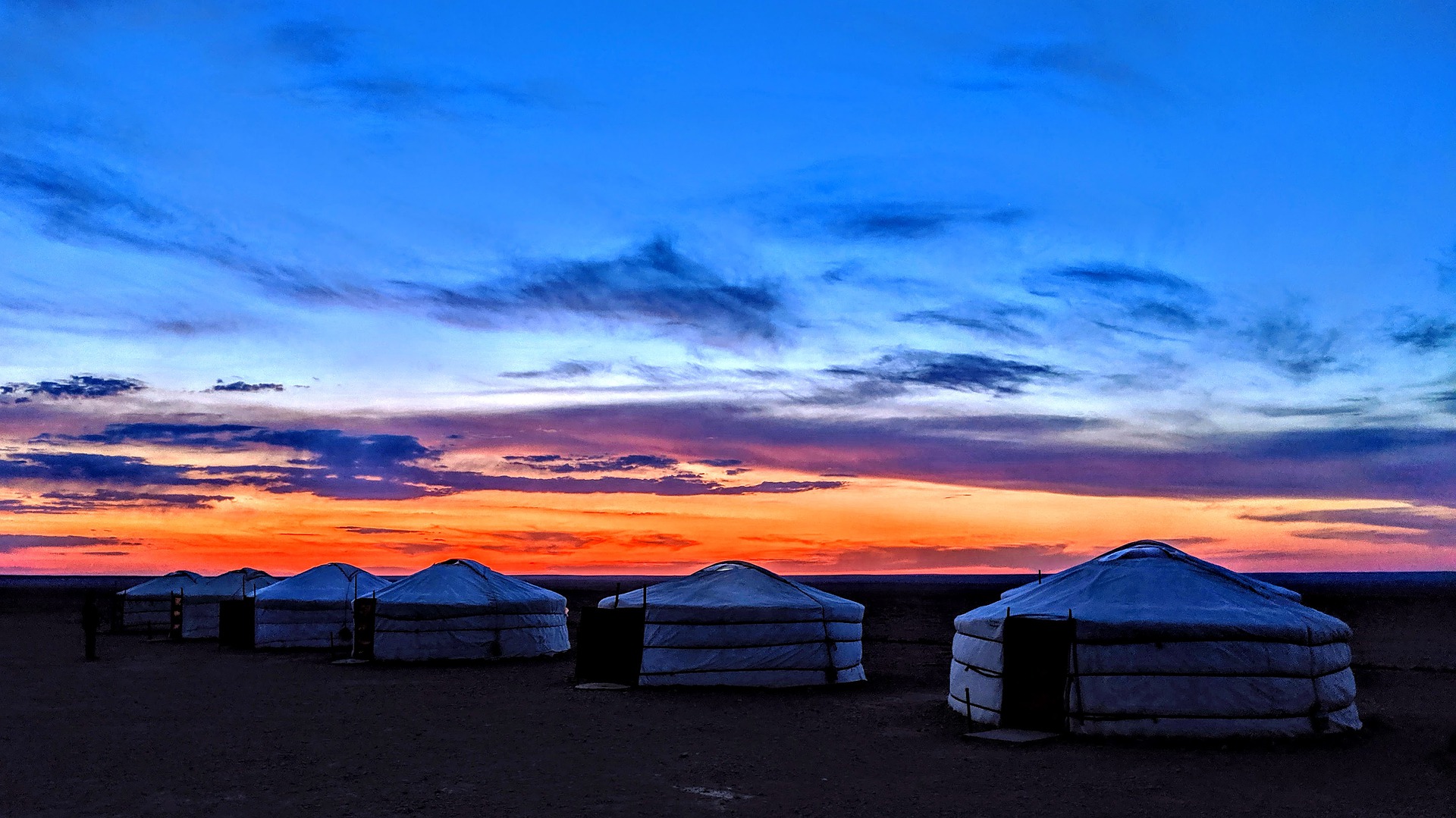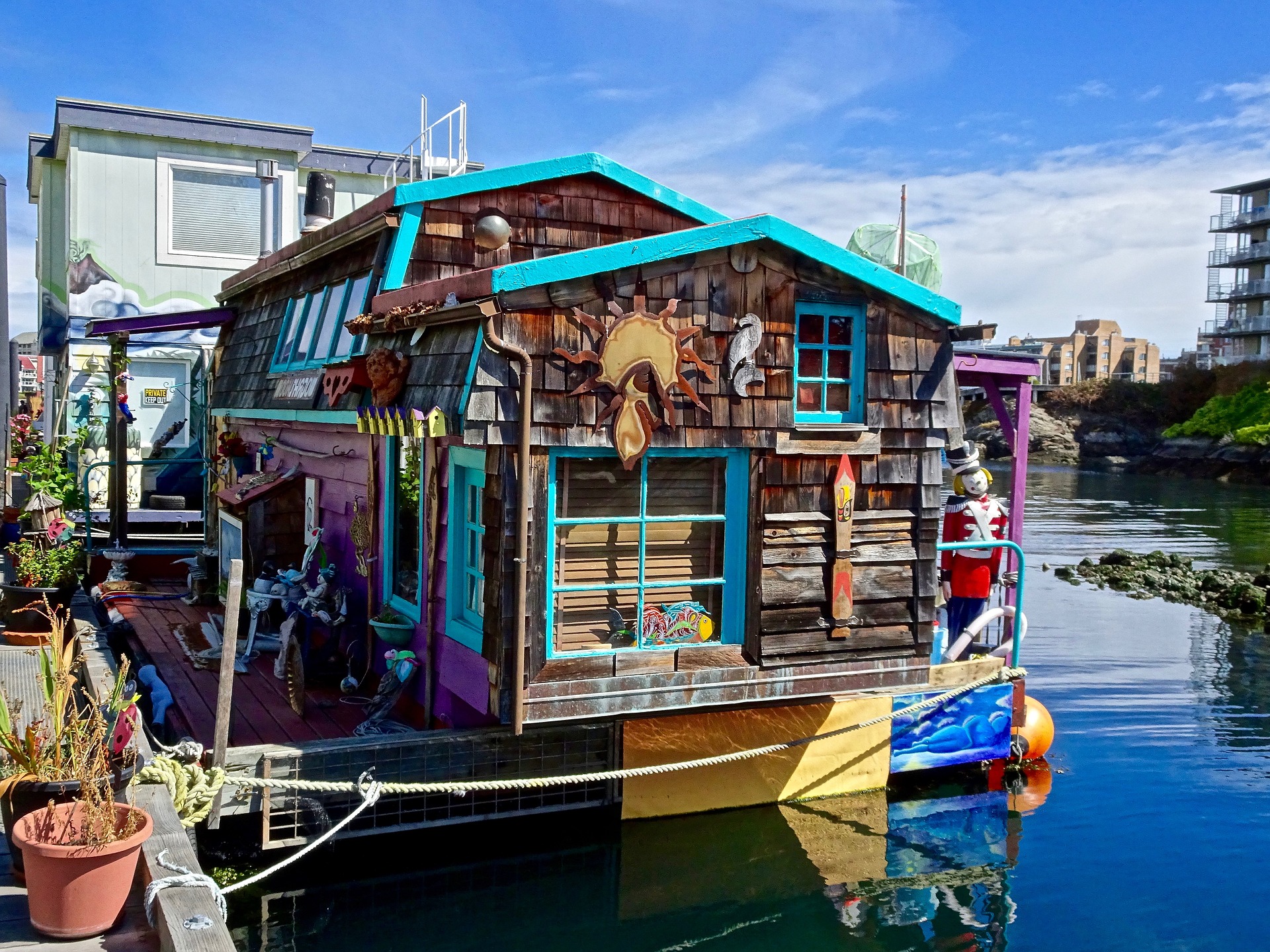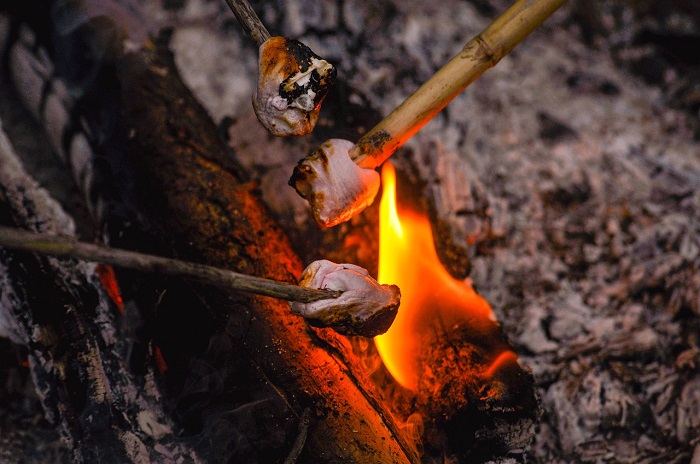What is a Yurt?
This seemingly simple question can be awfully complicated. It could have been simple, but things have moved on, advanced, and are now so varied and complex that a wee short answer is not going to quench the burning inquisitiveness of the asker of such a question now, is it? So here we go. The ultimate ramble into the brambles to the heart of the pythonic question.
Well? What is it......?
So we will start off nice and easy. In its simplest form a yurt is a circular frame made of wood which is covered in felt and/or skins. It has a door or a flap for entry and exit, plus a hole in the centre of the roof to let out the smoke produced from cooking and heating. Pretty darned vernacular. And rustic. Simple for sure. This yurt is a portable structure and is used to protect the user from the elements. To provide the user a temporary shelter whilst in a particular location for whatever reason.
Nowadays the location is much more varied, as is the reason for usage. So let us delve a little deeper into the question to tease out the many strands of yurt types.
Yurt Styles
First, let’s talk about styles. There are basically two styles of yurt. The Ger and the Kazakh. The main difference between the two styles is the roof construction. The roof-poles of a Ger are straight and the roof is not as steep as the Kazakh which has steam-bent roof-poles (rafters) and, generally, has more head room. Yurt walls are traditionally quite low. This low profile is needed on the harsh Central plains on Mongolia to prevent the force of the wind from destroying the structure.
Yurt Types
There are many types of yurt on the market today. There are as many off the market as well. There are contemporary yurt-style homes. These can be mansions. And then there are the festival pop-up yurts. The mass produced single use garbage that is used, abused then left to rot in the aftermath of the pulsing hordes.
Materials
Yurts are, seemingly, made of anything and everything in these modern times. The wood frame can now be plastic, or metal. The covers that were once felt and skins are now also jute, canvas, plastic, wood and a variety of other man-made products. They are vernacular in a contemporary sense.
The floor, which, in the early days, was always terra firma is now an individual choice from a smorgasboard of options that include wood platforms, concrete pads, industrial plastic, rammed earth, earthbag, and the list is as long as your imagination can take you. A raised platform constructed of wood seems to be the most popular option at present. All of these options are perfect if you are happy with them.
Once you have your floor in place you can cover it if you so choose. Options for this are varied too. Maybe you want carpet? A hardwood floor? Linoleum? Sea Grass? Ceramic Tiles? Choices.
The roof poles vary widely also. On some modern ‘yurts’ that are being offered by many yurt makers the construction materials are the same as you would use to build a house. The roof poles are now 9 x 2 rafters, or 6 x 2 and more. It all depends on the design, the roof load, span etc.
Insulation can now be placed between these rafters as well as on top. Traditionally, felt and skins were draped over the frame. This still happens but more often than not the felt is now excluded, and the skins are cotton canvas, or another man-made material. It all comes down to cost. The more that is included in your yurt package the more expensive it will be.
Insulation is in most cases an optional extra when you are purchasing a yurt from a maker/builder. You often see images of yurts on the internet that are glowing brightly in the night. This looks great but it also says that the yurt has a single cotton-canvas cover; no insulation. If you are intending to go glamping in a cold location ensure that a glowing yurt such as this has a good source of heat or you may spend an uncomfortable night, or week, shivering, both yourself to sleep, as well as during your waking hours.
Doors are another important element. The type of door you may require will be a personal thing. A simple flap may suit your needs. But a solid, lockable, embellished and beautiful door just might be what you are seeking. Doors can have glass windows set into them. Or not. They can be hardwood, softwood, PVC and more. The choice of door is between you and your maker – Yurt Maker, that is…..
Furnishings. The finishing touches are as important as the structure itself. You want to be happy with it, and comfortable, too. If your yurt is for a home then you will want to make it as functional and as comfortable as possible. There are a myriad of furnishing options. It is totally down to your personal taste, your imagination, and budget.
To sum up: A Yurt can be many things although, it has maintained it’s iconic profile ensuring it stands out, like a beacon, within the crowded alternative structures scene. Strong and versatile, the well-made yurt frame will serve you diligently, if you look after it, for many decades. The lifespan of the covers are another story.

